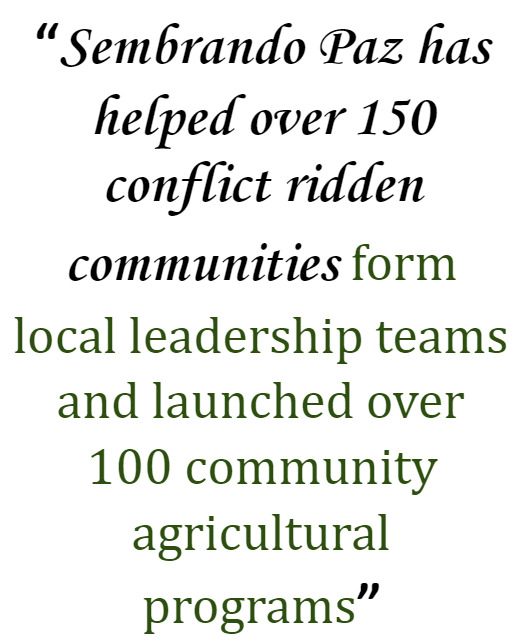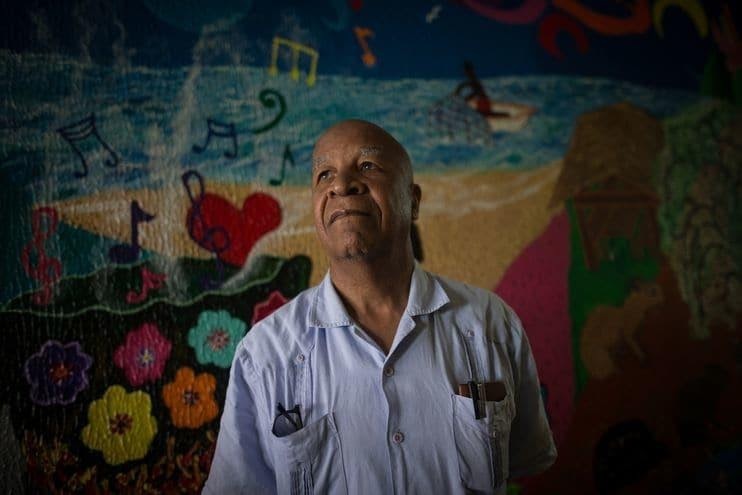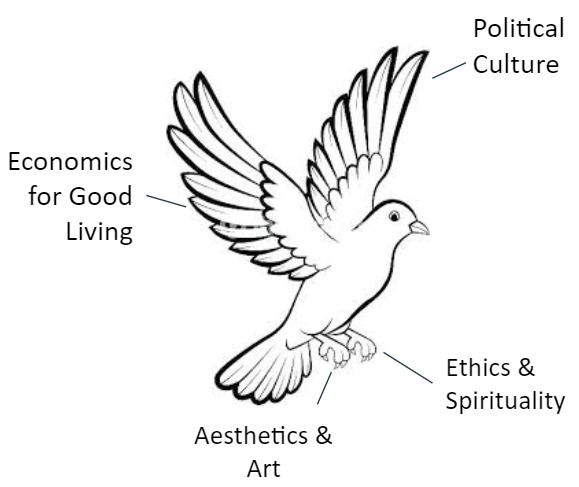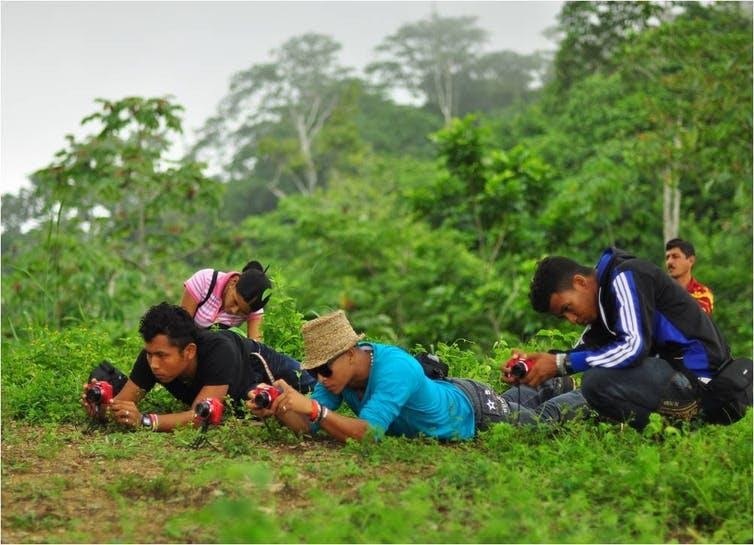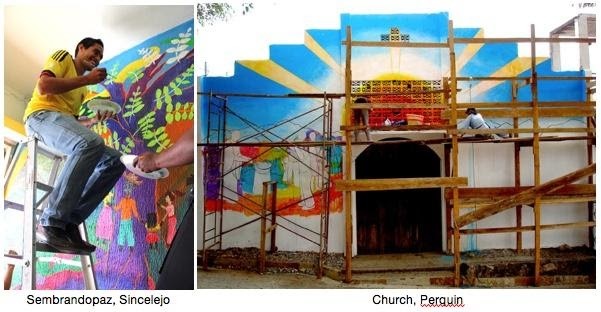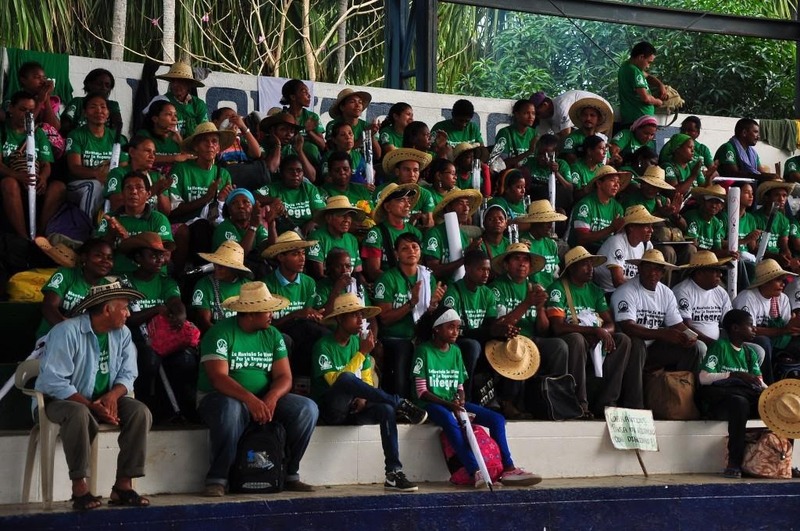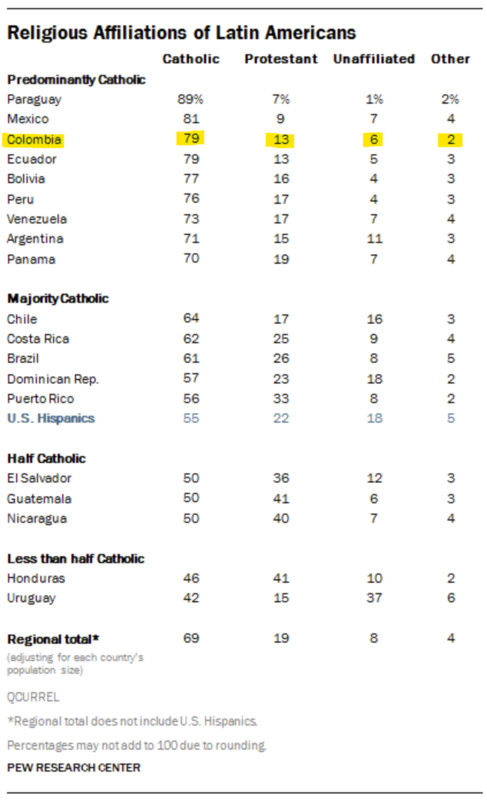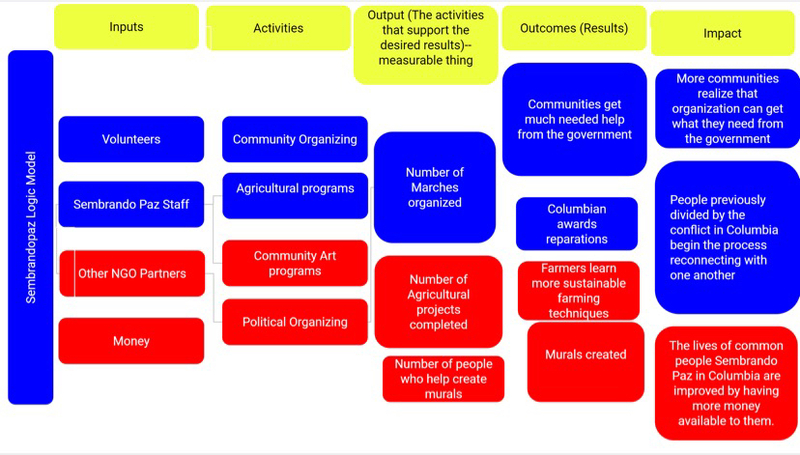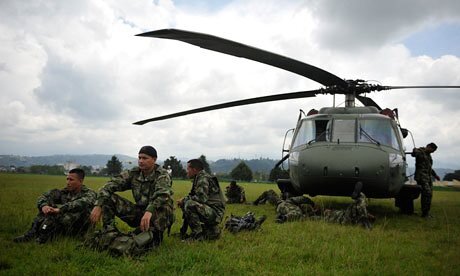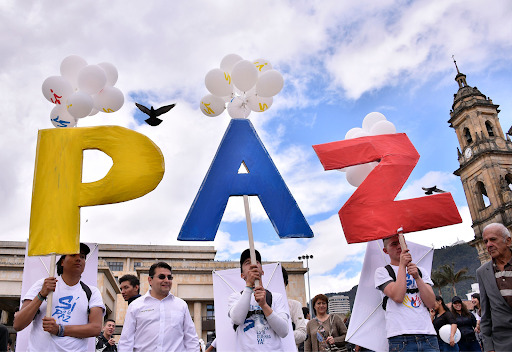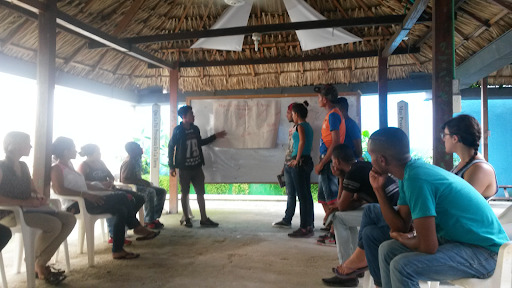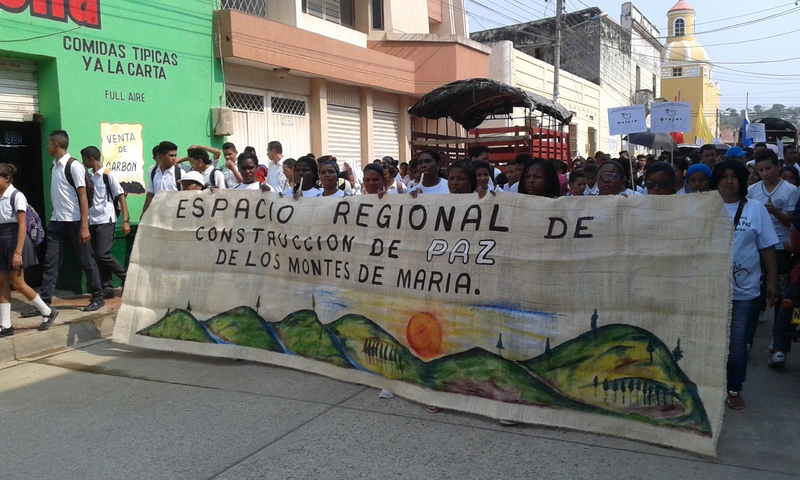Sembrandopaz: Sowing Seeds of Peace
This presentation was created by the Colombia Team: Shaniece Craig, Ashley Gonzalez Melo, Sally Hecht, Kyle Yarborough
Sembrandopaz: Sowing Seeds of Peace Association
Colombia has been plagued by years of armed conflict that has left thousands displaces, families in mourning and trust between people and government strained. Sembrandopaz is a civil nonprofit transitional justice group committed to helping the Colombian society reconcile years of human rights violations and mass atrocities.
"The Witness" follows photojournalist Jesus Abad Colorado on his journey to subjects of his photograph. "The Witness" is composed of 557 images which record 25 years of armed conflict in Colombia, and are currently displayed in the Cloister of San Agustín, of the National University of Colombia in Bogotá, just next to the Palacio de Nariño: a direct message to the ruling class of this country. The exhibit was visited by over 280,000 people in its first three months and "might be, without exaggeration, the exhibition that has had the greatest impact on Bogotá's society"
Sembradopaz or “sowing peace” was founded by Ricardo Esquivia Ballestas in 2006. Ricardo’s World view is the guiding light of Sembradopaz, and his reputation is in many ways what gives Sembradopaz much of its legitimacy, as both donors and those Sembradopaz works with put their trust in his reputation.
Ricardo was born into a poor family, with a father suffering from leprosy. This would lead to Ricardo being sent to a center for children of parents with leprosy that was being run by the Mennonite church. This would eventually lead to Ricardo becoming a Mennonite as well as being involved with their activities, starting an organization called “Christian center for justice, peace, and nonviolent action.” In 2006 with disappearances and massacres still actively happening in Columbia at the time, Ricardo created Sembradopaz to work with victims' families to help them get what they needed from the state, teaching them about their rights and nonviolent action. Ricardo’s work would lead to him becoming an even more respected figure in Columbia, with his name carrying significant weight.
Organizational Structure of Sembrandopaz
Sembradopaz does not view itself as having projects like a typical nonprofit organization. Instead Sembrandopaz views itself as having Processes, through which it completes its work. Sembrandopaz divides its processes into 4 major groups that then combine to make up the parts of its structure model: The bird model.
Economics for Good Living
One of the wings of their bird model, this section is an indigenous concept from southern Latin America or Bolivia & Peru specifically. The idea is to help farmers thrive in the Columbian market by teaching them sustainable farming techniques.
The processes that are involved with this section include things such as small-scale investments with small farmers, helping farmers transform products into finished goods from raw materials, eco-tourism, environmental work with youth. Some of the areas in which this section has found success is the training of hundreds of farmers in sustainable techniques, but also in the creation of over 100 agricultural and economic development associations across the Caribbean Coast.
Aesthetics & Art
One of the feet in Sembrandopaz’s bird model, this section operates with the belief that humans need beauty to both survive and thrive. Sembrandopaz has a dedicated arts team that handles the processes for this section which primarily involves bringing former adversaries together to exercise their collective vision in the creation of art as a form of reconciliation, An example of this can be seen in Sembrandopaz’s partnership with the organization “walls of hope” which brings victims of conflict together to tell their stories through the creation of community murals
Political Culture
Sembradnopaz’s second wing in their model is Political Culture. The processes involved in this section in teaching the communities of Columbia to be able to answer the questions of “What is state? How does it function? What are the laws? What aspects of the peace accords benefit communities?” Beyond this this section of Sembrandopaz tries to mend former conflicts by focusing on a reencounter approach, in which they try and get former adversaries together not for forgiveness, which they know is either impossible or a long way away, but rather to just view one another as human people.
Being one of Sembradnopaz’s biggest sections, political culture has had numerous successes according to Sembradnopaz’s website including forming over 50 local leadership teams, launching the “Citizens Commissions for Reconciliation and Peace”, and helping to organize and carry out political marches. Among other accomplishments, in 2013 Sembrandopaz helped organize the march that the High Mountain Movement in the Montes de Maria community carried out that led to the creation of 91 accords in which the government pledged to help the people of this community.
Ethics & Spirituality
The second foot of the bird model as well as the final section. This believes that teaching ethics is key as there is corruption at nearly every level of Columbian government, some of which are becoming cultural norms in Columbia, such as bribery and the buying/selling of votes.
Spirituality meanwhile connects Sembrado Paz to its Mennonite roots, but does not actively promote the Mennonite church, with most of the people Sembrandopaz helps not even knowing what a Mennonite is. Instead, spirituality refers to the fact that all humans are connected with nature, and that people have to help one another.
The chart to the left illustrates religious affiliations in South America. NGOs in South America adapt to the shared belief in religion of the regions. In Colombia particularly more than half of their citizens are Christian. Semprandopaz's religious roots are consequently due to their location and founder ties to spirtuality and ethics.
Colombia's Non-Governmental Sector
The NGOs working in Colombia face an uphill battle, between resistance from the far right paramilitary groups, far left
armed guards and militia, as well as the government themself, these organizations have their work cut out for them.
Resistance from the far left comes from the Guerilla Group known as Revolutionary Armed Forces of Colombia (FARC), that define themselves as left wing and communists. The conflict with FARC has resulted in the deaths of over a quarter million people, almost 50,000 people missing, and up to 7 million people displaced from their homes.
There’s another group known as the National Liberation Army, another left-wing violent group, that also is rooted in Venezuela. They officially disarmed in 2017, handing weapons over to the United Nations, but they are still very active in both countries, adding to the tension of the social climate of the nation. The far-right paramilitary groups are known for working with the drug cartels, and were born out of governmental shifts and conflicts of the 1960s. These groups’ decades-long conflicts have resulted in the world’s longest civil war, and the Colombian citizens pay the price.
NGO and Government Relationship
The Colombian Government also represents a new kind of struggle for NGOs, one less of violence, but more of bureaucratic obstacles, and other issues. NGOs, such as Sembranopaz, are shaping the landscape of the government, through the cultivation of a peaceful, community-led, civil society. Their work of farm subsidization and communication workshops pose a threat to the status quo, by elevating once disconnected villages, and low-income communities. There has been support from the government for many organizations, and in recent years the government has more openly supported them. There is an understanding that NGOs can be an incredibly useful tool for building social capital and keeping peace, as NGOs were a crucial element for the 2016 peace treaty between the FARC and the State. However, there is a disconnect between understanding their importance and not creating barriers, and actively raising them up.
NGOs in Colombia must pay taxes, and hold a Colombian bank account in order to remain legally legitimate. According to the Colombian government, NGOs are required to appoint adequate legal representation, establish a fiscal address, appoint a fiscal auditor, and open and maintain a bank account. These regulations are not outrageous, representing the state’s shift towards being more welcoming to these organizations.
Sembrandopaz Genocide and Mass Atrcocity Prevention Work
The Sembrandopaz organization facilitates a space for supporting the building of a sustainable culture of sustainable peace. They do this through sustainable, comprehensive human development and social justice. The organization divides its activities into four programs which include economics for good living, political culture, and ethics as well as spirituality in Colombia. These have numerous outputs for uplifting Colombian citizens and increasing interactions between the locals. The organization puts in place measures that enable it to identify and mitigate risks of genocide and mass atrocities. Such measures also help build the resilience of the Colombian society so that they can withstand
the risks. Sembrandopaz uses research on politics and the production of peacebuilding narratives and justice to understand the role these play in promoting the risk factors for genocide and mass atrocities.
The organization engages in dialogue and trust-building exercises as well as building and supporting legitimate representative institutions in Colombia with the aim of bringing divided communities to better terms. They were able to secure the first-ever case of reparations from the government of Colombia for a community. In 2012, the NGO helped the leadership team of Mampujan organize a three-day march to demand reparations as victims of the civil conflict. Sembrandopaz also promotes human rights and the rule of law as well as democratic governance so that they develop a culture of peace and supportive development (Castel, 2017). They have also been at the forefront of building the capacity of grassroots organizations. Some of their peacebuilding efforts have faced animosity as their director had received death threats and political persecution, meaning that transition from violence is highly politicized and often dangerous. Those who try to bring about change face difficulties.


